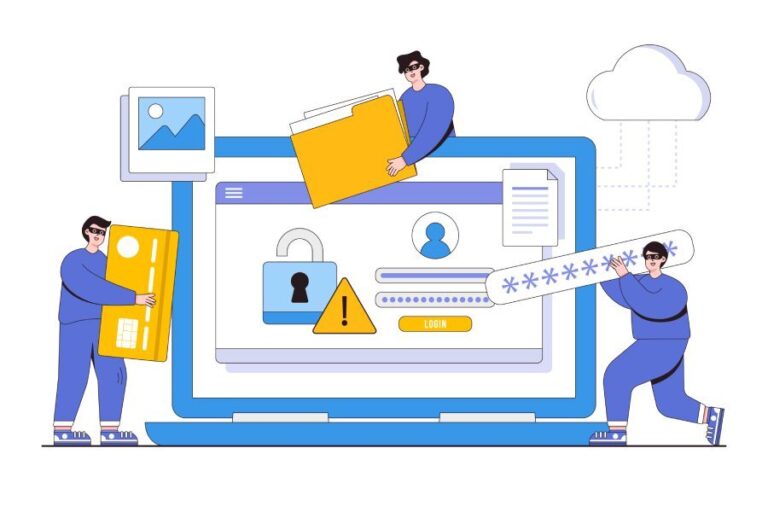Mandatory Requirement: DMARC Compliance Included in PCI DSS Version 4.0
This test shares the details of the latest DMARC compliance as part of PCI DSS v4.0. Let’s take a look.
In response to growing cybersecurity attacks, the upcoming PCI Data Security Standards version 4.0 (PCI DSS v4.0) mandates the implementation of DMARC (Domain-based Message Authentication, Reporting, and Conformance) for organizations handling sensitive cardholder data. Here is everything you need to know.
The Role of Email in the PCI DSS Evolution
PCI DSS, a security standard by the Payment Card Industry Security Standards Council (PCI SSC), mandates the secure handling of cardholder data. Its evolution, exemplified by version 4.0, emphasizes email authentication, such as DMARC, to combat phishing threats, email-based attacks and protect sensitive data, underlining the critical synergy between cybersecurity and payment card transactions.
The indispensable role of email within PCI DSS organizations underscores the heightened significance of implementing robust email security measures, notably email authentication protocols like DMARC. These measures safeguard sensitive cardholder information, fortify defenses against unauthorized access, and thwart potential phishing attacks and cybersecurity attacks.

Evolution of Email Security in PCI DSS v4
The PCI Data Security Standards version 4.0 (PCI DSS v4.0) responds to escalating cybersecurity threats by mandating DMARC implementation for organizations handling sensitive cardholder data. This article explores the integration of DMARC into PCI DSS v4.0, highlighting its role in enhancing email security and safeguarding payment transactions.
Key Transformations in PCI DSS v4.0
PCI DSS v4.0 brings significant changes to bolster security standards. It prioritizes email authentication and implements DMARC to fortify defenses against cybersecurity attacks and secure cardholder information.
- Customized Approach to Cybersecurity: Tailored security measures based on specific organizational risks for better protection.
- Enhanced Testing Procedures: Strengthened testing to address vulnerabilities effectively and bolster security controls.
- Focus on Network Security Controls: Increased emphasis on isolating sensitive data through network segmentation.
- Strong Cryptography for Data Security: Emphasis on robust encryption algorithms aligned with industry standards.
- Removal of Redundant Requirements: Streamlined standard with eliminating redundant provisions for clarity.
- Enforcement of DMARC Deployment: Mandatory DMARC implementation for robust email security against phishing.
Strengthening Security Measures
PCI DSS v4.0 introduces significant changes to enhance security standards, emphasizing email authentication and DMARC implementation as a defense against cybersecurity attacks and the protection of cardholder information. With customized cybersecurity approaches, strengthened testing procedures, and a focus on network security controls, organizations can bolster their defense against evolving threats.
Mandatory DMARC Implementation for PCI DSS Compliance
PCI DSS v4.0 reinforces email security as a core aspect of safeguarding sensitive cardholder data. DMARC implementation is now mandatory for organizations processing payment transactions. DMARC, endorsed by the PCI Security Standards Council, combats email-based attacks like phishing by enforcing stringent email authentication policies. This proactive step enhances email security, aligns with PCI DSS requirements, and fosters trust in digital payment communications.
By adhering to DMARC policy such as “p=reject” or “p=quarantine,” businesses bolster their email security, contribute to a safer payment environment, and align with the overarching goals of PCI DSS v4.0 – fostering protection and resilience against evolving threats.

Advantages of DMARC for PCI DSS Compliance
DMARC offers indispensable benefits for organizations adhering to PCI DSS requirements, enhancing security and regulatory compliance, including:
- Phishing and Spoofing Prevention: DMARC reports monitor domain infrastructure, enabling timely detection and resolution of potential breaches or phishing attacks, mitigating risks before escalation.
- Improved Email Deliverability: DMARC aligns with email best practices beyond security, potentially enhancing email deliverability rates and ensuring critical communications reach intended recipients.
- Strengthened Brand Trust: DMARC prevents unauthorized senders from exploiting your domain, building trust with customers, partners, and vendors, and bolstering brand reputation and credibility.
A Guide to DMARC Implementation for PCI DSS Compliance
Setting up DMARC to meet PCI DSS rules requires careful planning and action. Follow these steps for strong email safety:
- First, review your email setup and find the domains and systems in use.
- Make a detailed DMARC implementation plan that fits your organization.
- Set up SPF (Sender Policy Framework) and DKIM (DomainKeys Identified Mail), making sure they match DMARC rules.
- Use a tool to create a DMARC record, focusing on important DMARC parts.
- Start with a “none” DMARC policy, then move to “quarantine” and “reject.”
- Look at DMARC reports to learn about your email system and find problems.
- Keep watching and fixing to stay secure as things change, and educate your staff about DMARC.
Final Words
PCI DSS v4.0 wants DMARC to be part of email security. This helps organizations fight email-based attacks such as phishing and keeps up with new rules. DMARC as a part of PCI DSS will stop fake emails, making payments safer and building trust.







